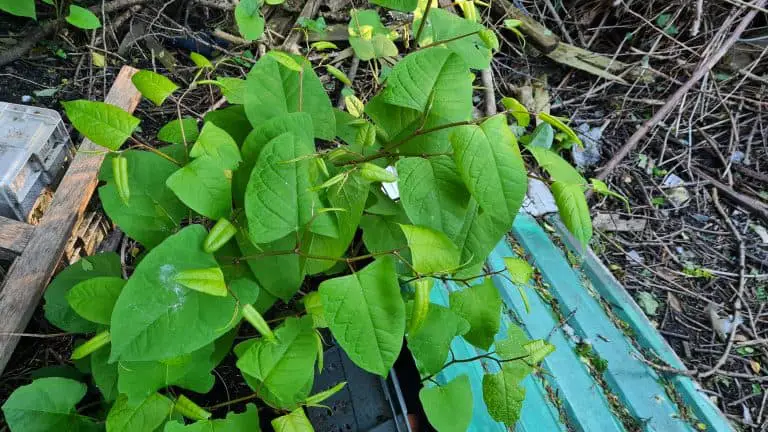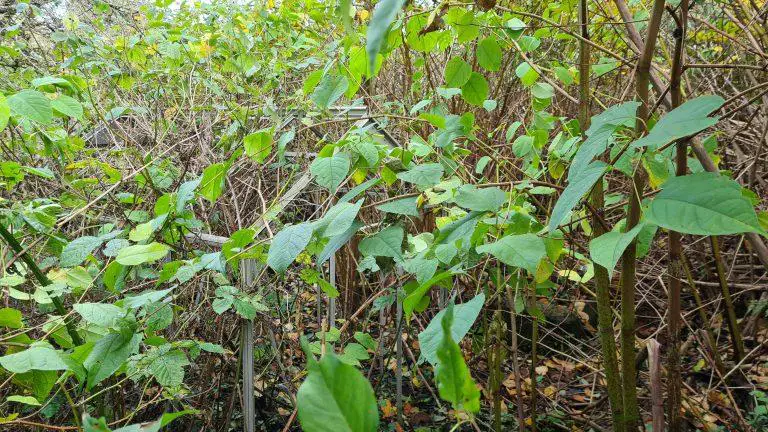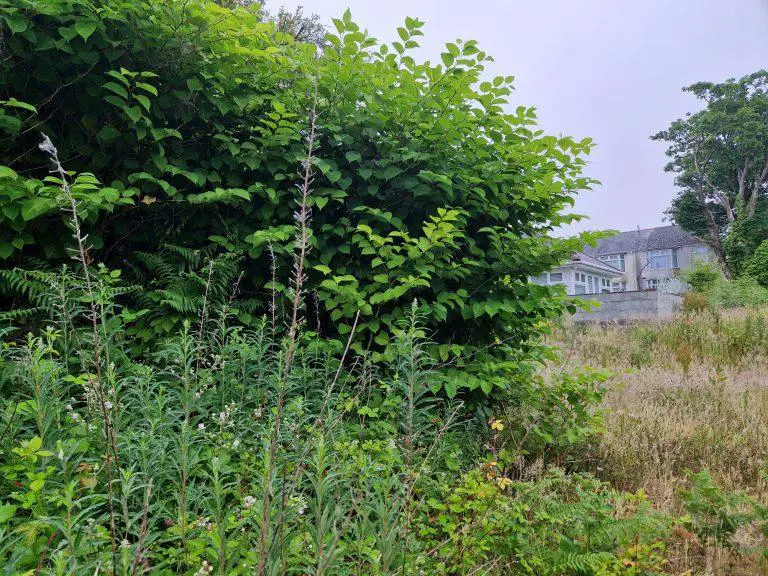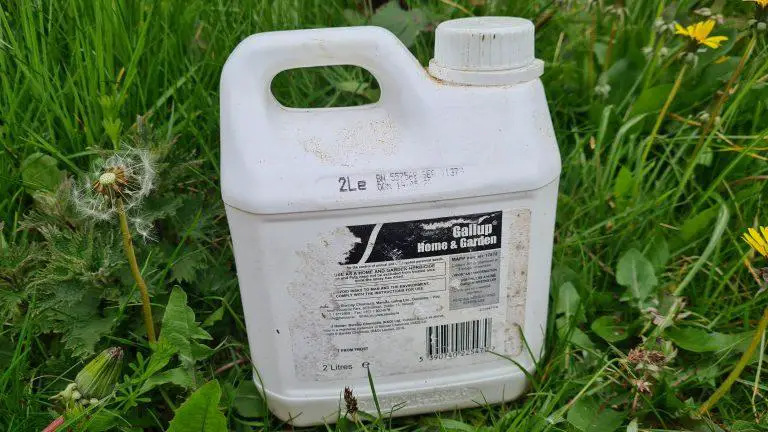Japanese knotweed is a plant that can be found all over the world. It has a tendency to grow very quickly, and can often be mistaken for bamboo.
However, Japanese knotweed should not be confused with many other plants including bamboo, as it is a much more invasive species.
What is Japanese knotweed?
Japanese knotweed (Fallopia japonica) is an invasive plant species that is native to East Asia. It was first introduced to Europe in the late 1800s as an ornamental plant, and it has since spread throughout the continent. Japanese knotweed can grow up to three meters in height and produces small white flowers.
The plant’s stem is hollow and bamboo-like, and its leaves are broad and heart-shaped. Japanese knotweed is often mistaken for other plants, such as knotweed (Polygonum spp.), fleece flower (Persicaria spp.), or false buckwheat (Fagopyrum esculentum).
However, Japanese knotweed can be distinguished from these other plants by its flowering time (July-September), leaf shape, and stem size. If you think you have found Japanese knotweed on your property, it is important to contact a qualified professional for identification and removal.
Plants that are mistaken for Japanese knotweed
Some of the most common plants that look like Japanese knotweed include:
- Bindweed
- Broadleaf Dock
- Bamboo
- Common Dogwood
- Common Elder
- Giant Knotweed
- Ground Elder
- Hedge Bindweed
- Himalayan Balsam
- Himalayan Knotweed
- Himalayan Honeysuckle
- Houttuynia Cordata
- Russian Vine
Bindweed (Convolvulus arvensis)
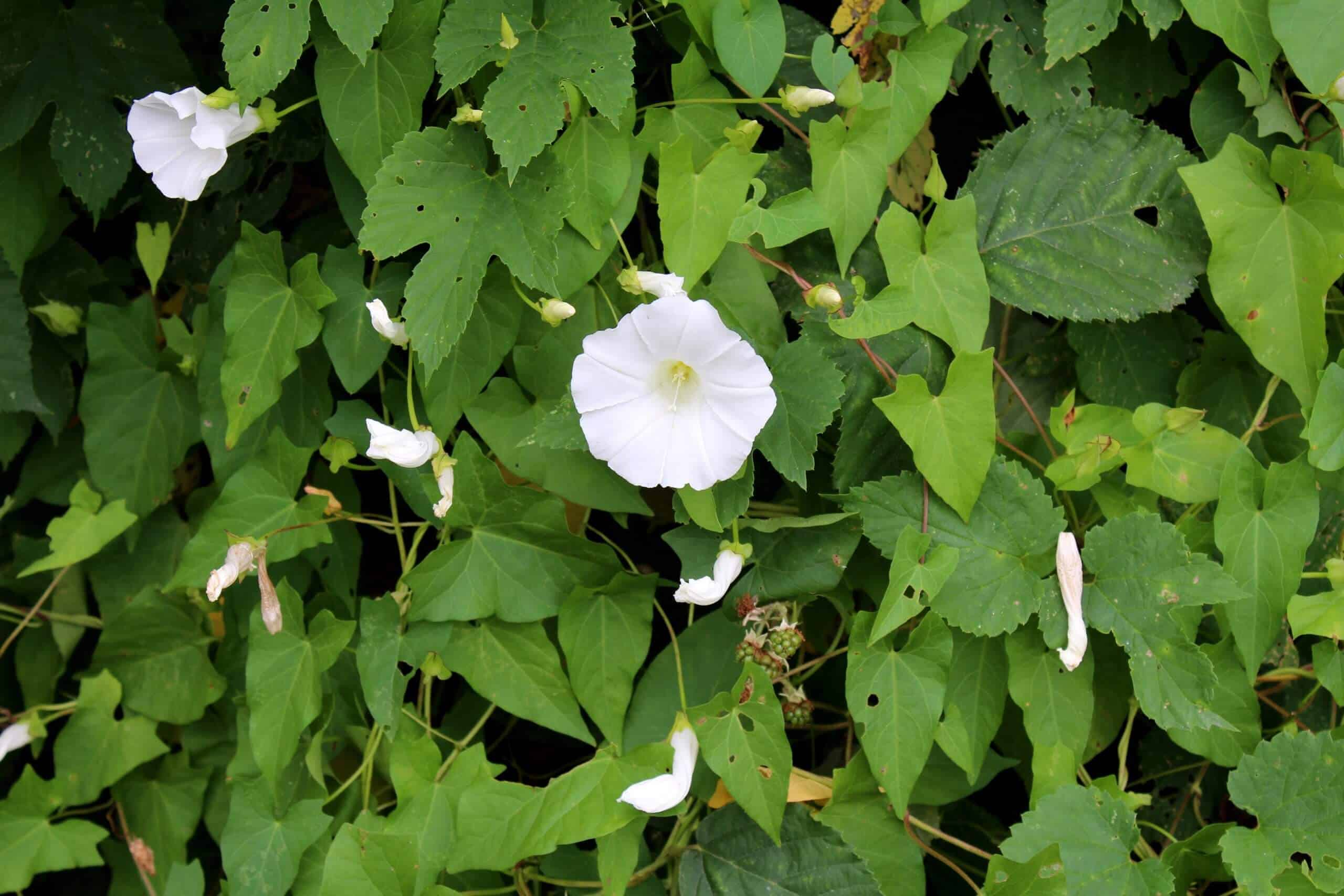
How Bindweed looks similar to Japanese Knotweed
With its heart-shaped leaves, Bindweed may look similar to Japanese Knotweed. The leaves of Bindweed also alternate along the stem and, much like knotweed, when it appears in spring, Bindweed can cover a large area very quickly.
How you can tell the difference between Bindweed and Knotweed
As its name suggests, Bindweed is a climbing plant that grows by twisting around the stems of other erect standing plants; it is unable to support itself and grows straight up as Knotweed does.
You will also notice large, pink or white, trumpet flowers start to grow in early summer, which distinguishes it from Japanese Knotweed.
How to get rid of Bindweed
Since it grapples with other plants in your garden, Bindweed can be difficult to eliminate with herbicides. If you don’t want to damage the other plants, you can apply a spot weedkiller to the leaves which will be absorbed.
Also, by cutting the plant down to ground level, it will have to use up its energy reserves in its roots, which will eventually kill it.
Broadleaf Dock (Rumex obtusifolius)
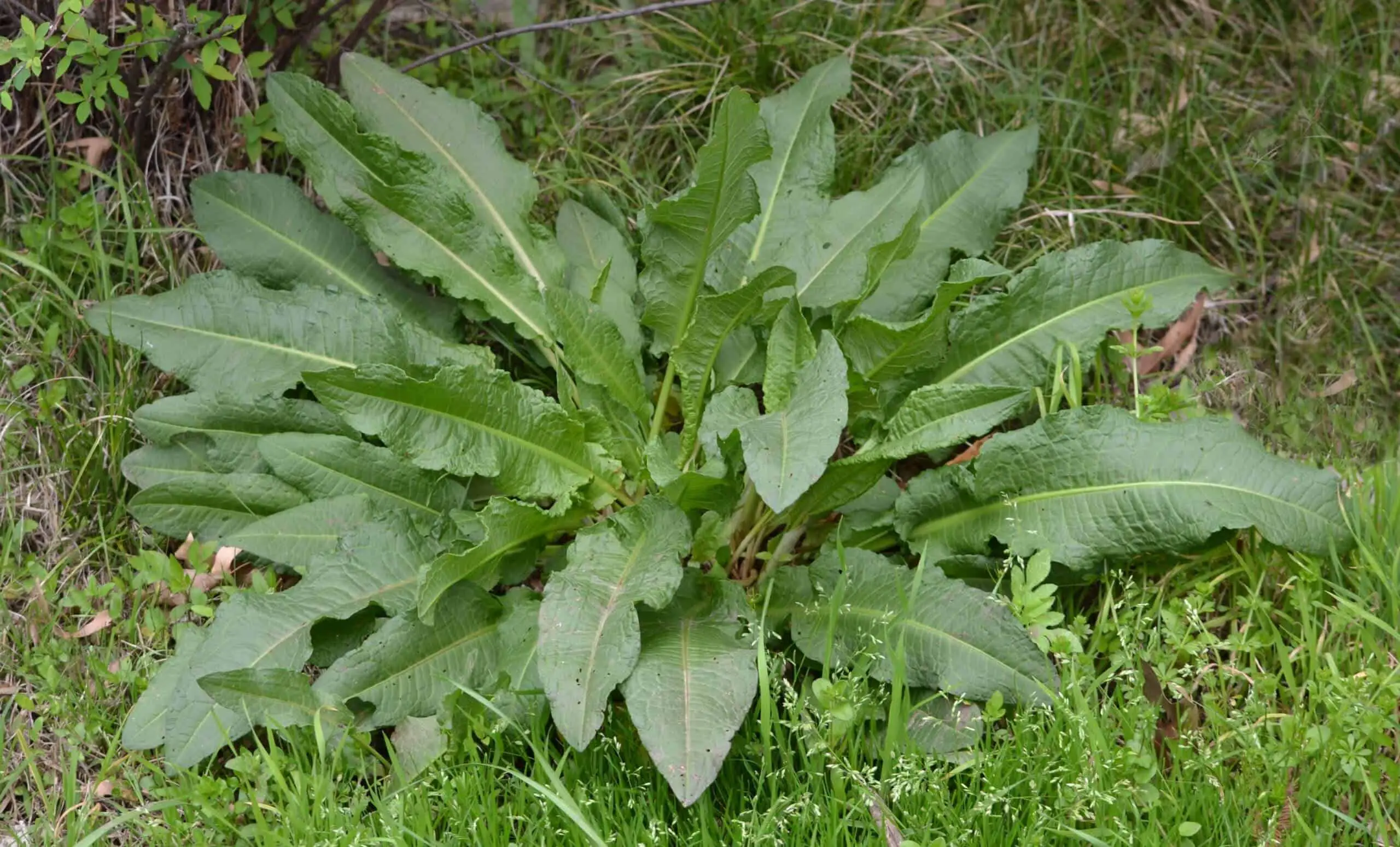
How Broadleaf Dock looks similar to Japanese Knotweed
Part of the same family, so hardly surprising that it looks similar to knotweed, Broadleaved Dock has leaves arranged alternately along the stem as well. Its flowers and stems are also from spikes just like knotweed.
How you can tell the difference between Broadleaf Dock and Knotweed
Stems are fluted and shorter than knotweed plants, growing up to 1m in height. The stems are not completely hollow and contain a foam-like substance when snapped open.
How to get rid of Broadleaf Dock
Roundup herbicide should do the trick if you don’t mind using herbicides in your garden, otherwise, you could try boiling water or vinegar. Check out our homemade vinegar recipe here.
If you decide to dig it up, you’re going to need to go down three feet to get every last trace of root out and avoid a regrowth.
Bamboo
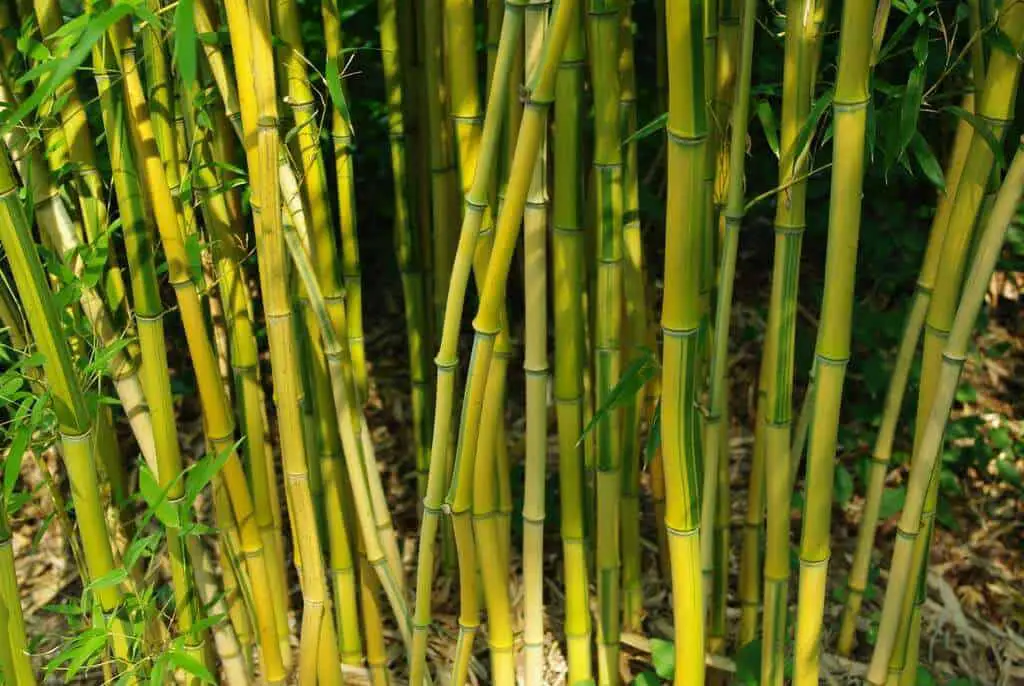
How Bamboo looks similar to Japanese Knotweed
Clear nodes on its stem and the fact that it can easily grow as tall as knotweed, if not higher, means the two are easily confused.
How you can tell the difference between Bamboo and Knotweed
Take a look at the leaves, those of bamboo are much longer and thinner, also the stem is much harder, and you won’t be able to snap it with your fingers very easily.
Bamboo is a tall, thin plant that grows quickly. It has small leaves and a hollow stem. Knotweed is a short, bushy plant with large leaves. It has a solid stem.
How to get rid of Bamboo
Bamboo roots grow very close to the surface, so smaller infestations can probably be pulled up by hand, just make sure to get all the rhizomes to avoid regrowth.
For larger infestations, cut the stems close to the ground and pour Roundup herbicide down the hollow shoots. You can keep bamboo contained in your garden by using root barriers.
Common Dogwood
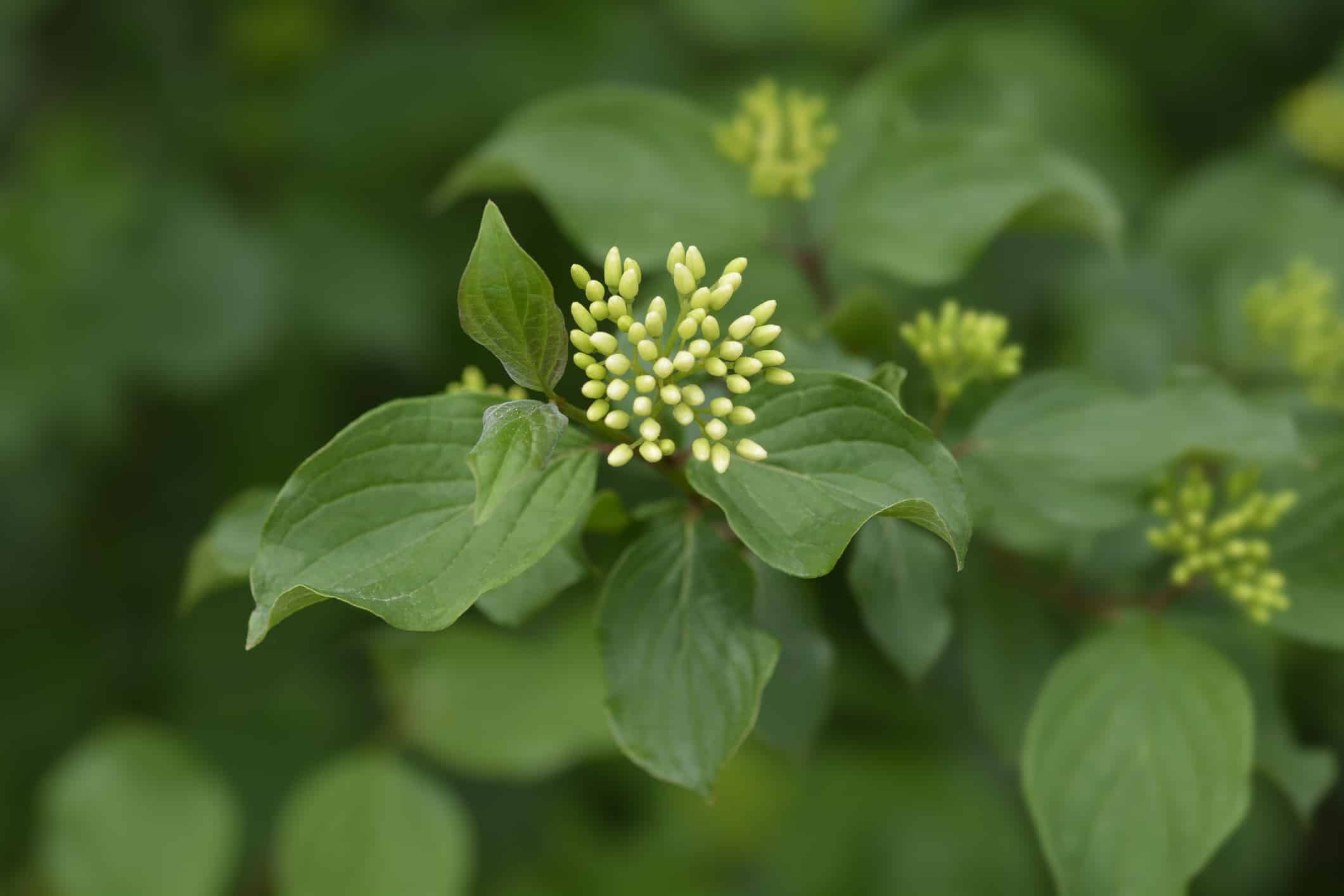
How Common Dogwood looks similar to Japanese Knotweed
Both plants are tall, and they have leaves that grow in opposite pairs. However, there are some key differences between the two plants.
How you can tell the difference between Common Dogwood and Knotweed
It can be difficult to tell the difference between Japanese knotweed and common dogwood, as both plants are tall and have leaves that grow in opposite pairs.
However, there are some key differences between the two plants. Japanese knotweed has bamboo-like stems, while common dogwood does not. Japanese knotweed also flowers in late summer or early autumn, while common dogwood flowers in the spring.
Finally, Japanese knotweed invades disturbed areas, such as roadsides and construction sites, while common dogwood is found in forested areas. If you’re not sure which plant you’re looking at, ask a local expert or take a photo to show them.
How to get rid of Common Dogwood
To remove common dogwood, you can dig up the plant or use herbicide. If you use herbicide, make sure to follow the instructions on the label in order t protect any nearby plants.
You should also dispose of the plant matter in a landfill or incinerator, as it can regrow from even a small piece of stem or root.
Common Elder (Sambucus nigra)

How Common Elder looks similar to Japanese Knotweed
Japanese Knotweed has much larger leaves than Common Elder. The leaves of Japanese Knotweed can grow up to 8 inches long, while those of Common Elder are only about half that size.
How you can tell the difference between Common Elder and Knotweed
Common Elder has lacy, green leaves while Knotweed has broad, jagged leaves. The stems of Common Elder are also smooth while Knotweed’s stem is hairy.
The flowers of the two plants are also different: Japanese Knotweed has small, white flowers, while Common Elder has large, showy flowers that can be either white or pink.
Finally, the stems of Japanese Knotweed are hollow, while those of Common Elder are solid.
How to get rid of Common Elder
- Cut the plant down to the ground. This will help to kill the roots and prevent them from regrowing.
- Dig up the roots of the plant. If they are left in the ground, they can continue to grow and spread.
- Apply a herbicide to the area where the plant was growing. This will help to prevent new growth
- Monitor the area for new growth and remove it as soon as it appears. This will help to keep the plant from spreading.
- Dispose of all plant material in a garbage bag. This will help to prevent the spread of the plant to other areas.
Giant Knotweed (Fallopia sachalinensis)
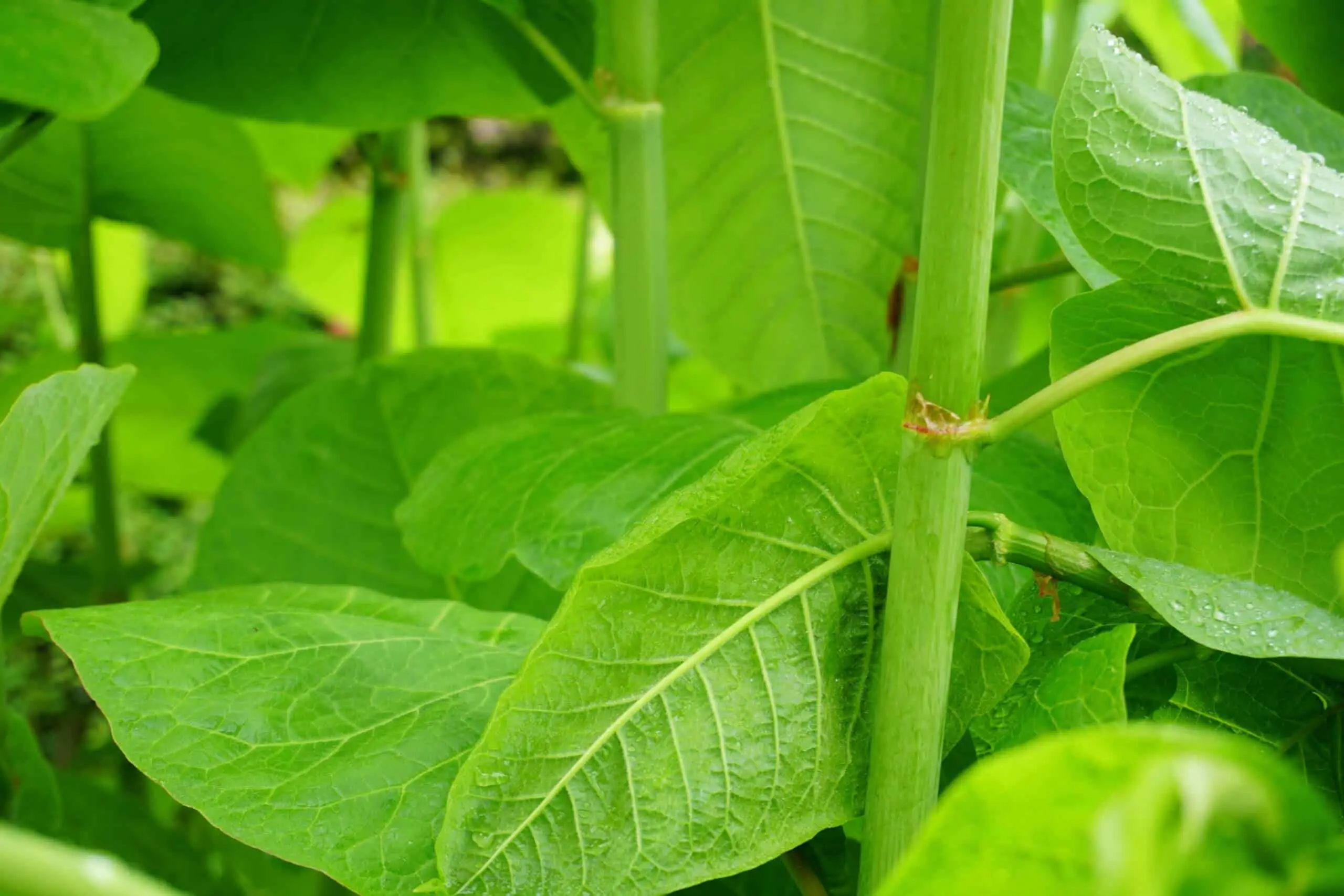
How Giant Knotweed looks similar to Japanese Knotweed
Giant Knotweed is a perennial weed that originated in Asia. It can be identified by its bamboo-like stalk, large leaves, and small white flowers.
How you can tell the difference between Giant Knotweed and Knotweed
Giant Knotweed is more aggressive and can grow up to 20 feet tall, while Japanese Knotweed only grows up to 10 feet tall.
Giant Knotweed has leaves that are broad and heart-shaped, while Knotweed leaves are narrower and more pointy. Another way to tell them apart is by their flowers. Giant Knotweed has small, creamy white flowers that grow in clusters, while Knotweed has larger, pink or white flowers that grow individually.
Additionally, Giant Knotweed has a larger root system that can reach up to 7 feet deep, while Japanese Knotweed only has a root system that reaches 3 feet deep.
How to get rid of Giant Knotweed
- Cut it down and dig it up. This is the most labour-intensive method, but it is also the most effective. Cutting down the plant will not kill it, but it will weaken it and make it easier to dig up. Be sure to get as much of the root system as possible. If any pieces are left behind, they will quickly grow back.
- Smother it with plastic. Placing a heavy tarp or piece of plastic over the plant will block out sunlight and suffocate it. This method takes several months to work, so be patient.
- Use a herbicide. Herbicides are the most effective way to kill Giant Knotweed. There are many products on the market that will work, but be sure to choose one that is specifically labelled for use on Giant Knotweed. Apply the herbicide according to the label instructions.
Ground Elder (Aegopodium podagraria)
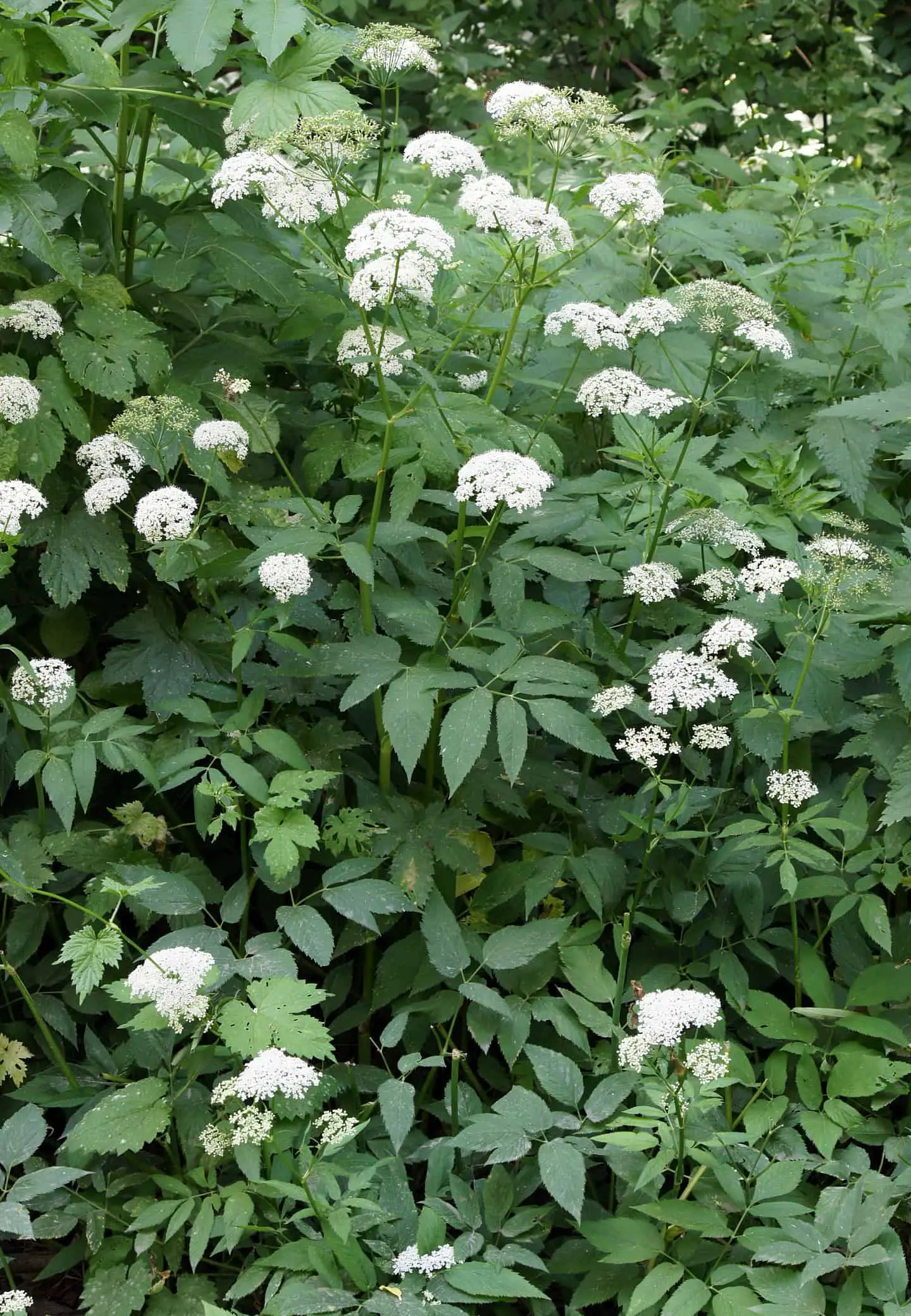
How Ground Elder looks similar to Japanese Knotweed
They share a number of similarities, including their appearance. Both plants have tall, green stems with leaves that grow in pairs along the stem.
How you can tell the difference between Ground Elder and Knotweed
The leaves of Ground elder are typically more rounded than those of Japanese knotweed, which are more pointed. Additionally, Ground elder has small white flowers that grow in clusters, while Japanese knotweed does not flower.
Finally, Ground elder typically grows to a height of 2-3 feet, while Japanese knotweed can grow up to 10 feet tall. While these plants may look similar, they can be distinguished by their leaves, flowers, and height.
How to get rid of Ground Elder
There are several ways to get rid of this weed, but the most effective way is by using herbicides. Herbicides can be purchased at most garden stores, and they come in both liquid and granular forms.
The most effective way to use herbicides is to apply them directly to the leaves of the weed. This can be done using a spray bottle or a pump sprayer.
When applying herbicides, it is important to follow the instructions on the label carefully. In most cases, herbicides should be applied to the leaves of the weed when they are damp. This will help to ensure that the herbicide is absorbed by the plant more effectively.
Hedge Bindweed (Convolvulus sepium L.)
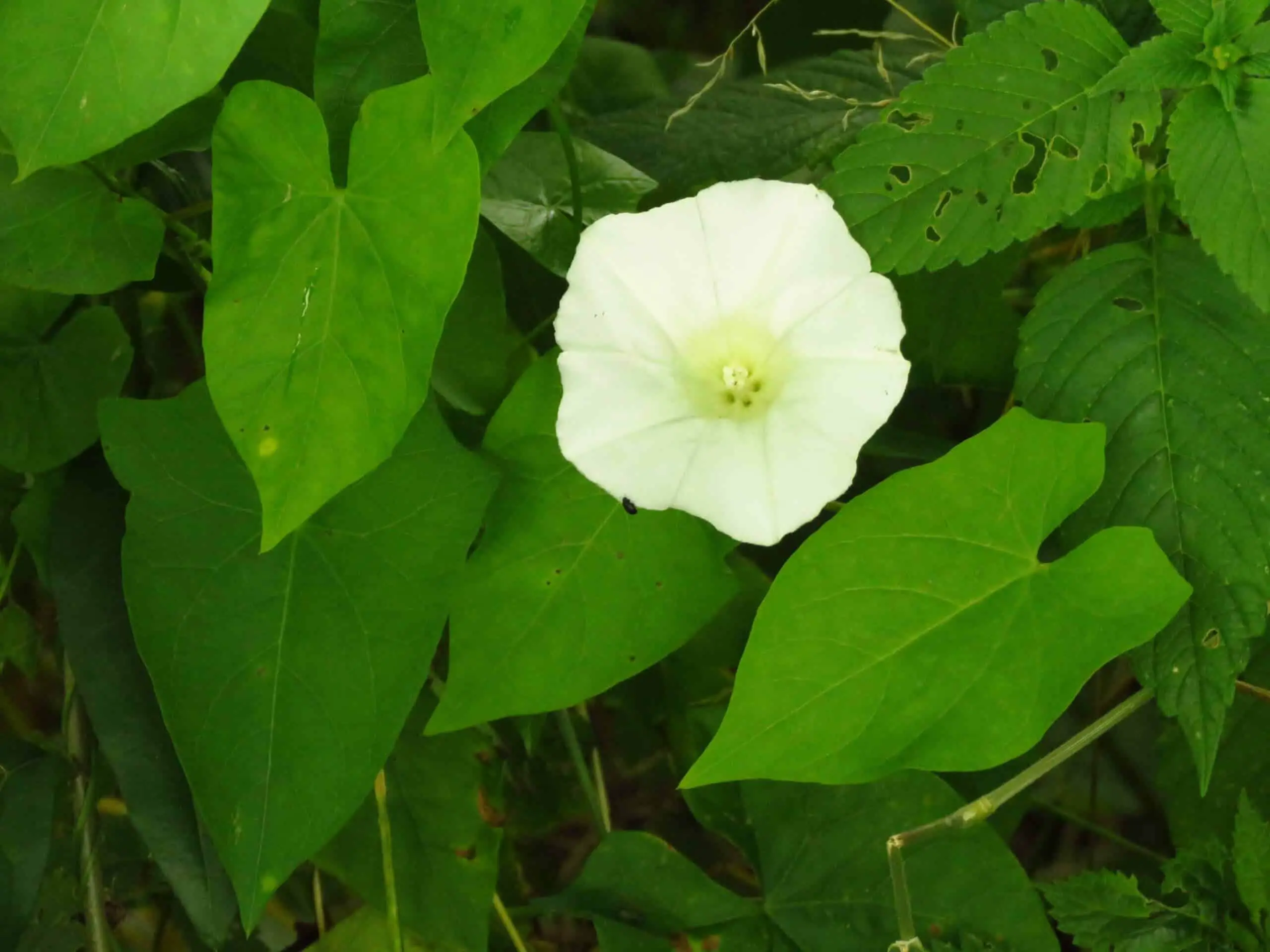
How Hedge Bindweed looks similar to Japanese Knotweed
Hedge bindweed looks similar to Japanese knotweed, but it is not as invasive. It grows quickly and can easily take over a garden if it is not kept under control.
How you can tell the difference between Hedge Bindweed and Knotweed
There are a few ways to tell the difference between Hedge Bindweed and Knotweed, but one of the most common methods is by looking at the leaves. Hedge Bindweed has broad leaves that are deeply lobed, while Knotweed has narrower leaves that are less lobed.
Additionally, Hedge Bindweed typically blooms white flowers in late summer or early fall, while Knotweed blooms small greenish-white flowers in late summer.
Finally, Hedge Bindweed typically grows to be about 2-3 feet tall, while Knotweed can grow up to 6 feet tall.
How to get rid of Hedge Bindweed
The best way to control hedge bindweed is to pull it up by the roots. If you have a large infestation of hedge bindweed, you may need to use a herbicide with a sprayer for best results.
Himalayan Balsam (Impatiens Glandulifera)
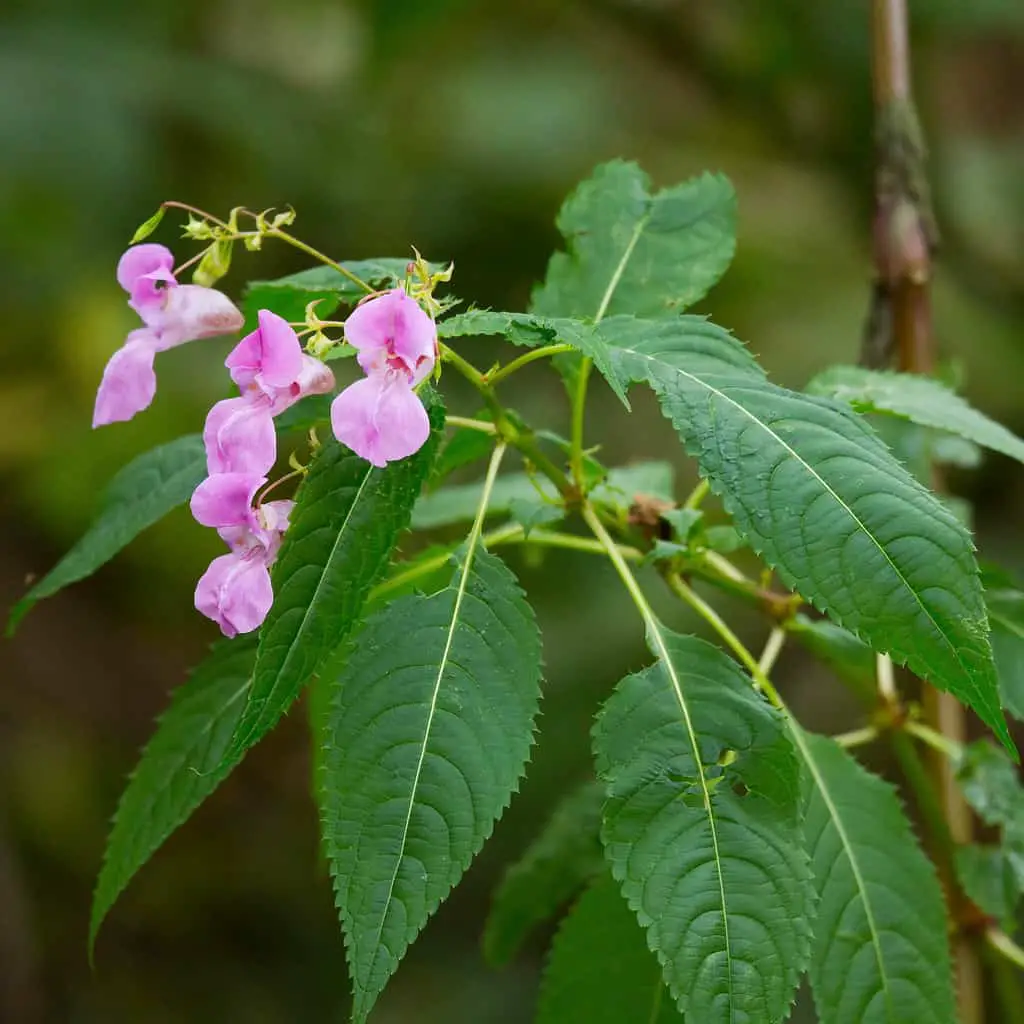
How Himalayan Balsam looks similar to Japanese Knotweed
Just like Japanese Knotweed, Himalayan Balsam is a fast grower; it can quickly cover a large area and grow as tall as 2.5 meters. And like Japanese Knotweed, it also has a hollow stem.
How you can tell the difference between Balsam and Knotweed
Take a look at the stem and you will see the leaves grow opposite each other rather than in an alternating pattern like Japanese Knotweed does. The leaves themselves are also much longer and thinner too, with a pink midrib.
Watch out for the large, pink, hooded, and lipped flowers that will form in mid to late summer.
How to get rid of Himalayan Balsam
Unlike Japanese Knotweed, Himalayan Balsam propagates via seeds, which will explode upon touch when ready.
Cutting the plants down to ground level can stall their progress, but be sure to plan your attack for the end of June; too late and you risk spreading the seeds, too early and you risk precipitating a regrowth of new stems.
Himalayan Knotweed (Persicaria wallichii)

How Himalayan looks similar to Japanese Knotweed
With a very similar stem to Japanese Knotweed, it can easily be mistaken when not in bloom. You’ll also find that it has hollow stem-like knotweed and that the leaves are alternately arranged along the stem too.
How you can tell the difference between Himalayan and Japanese Knotweed
You can easily tell the difference by the leaves, which on the Himalayan Knotweed are very narrow, often half as wide as they are long. On closer inspection, you’ll also note that the stem is much thinner, growing to around 1cm in diameter.
The flowers of Himalayan Knotweed have a pink hue, which distinguishes them from the pure white of Japanese Knotweeds.
How to get rid of Himalayan Knotweed
Himalayan Knotweed originated in Western Asia, but it is just as pernicious as its Japanese cousin, and you should call Japanese Knotweed Specialists as soon as you have identified it to arrange a herbicidal or excavation removal process.
Himalayan Honeysuckle (Leycesteria formosa)
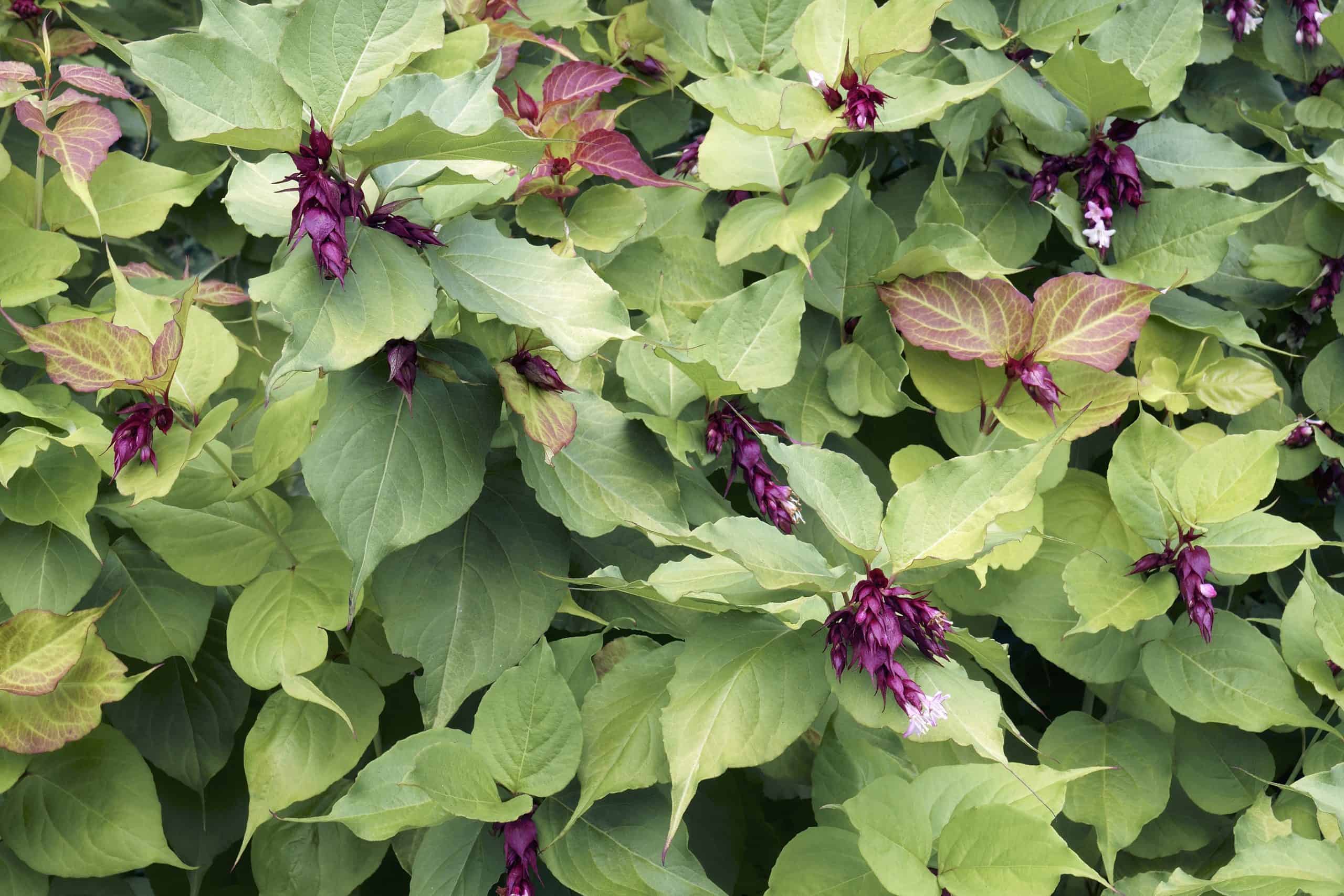
How Himalayan Honeysuckle looks similar to Japanese Knotweed
Himalayan Honeysuckle has hollow stems which can look a lot like knotweed and can also be broken fairly easily.
How you can tell the difference
The leaves growing opposite each other along the stem distinguishes it from knotweed, as do the pale green stems with no purple speckles. It becomes easier to identify in late summer when its distinct drooping white flowers sprout from pendulous racemes.
What to do about Himalayan Honeysuckle
Cutting it right down to the ground and painting over the stump should do the trick, or you could also apply a herbicide. To prevent regrowth, be sure to replant with other plants.
Houttuynia Cordata
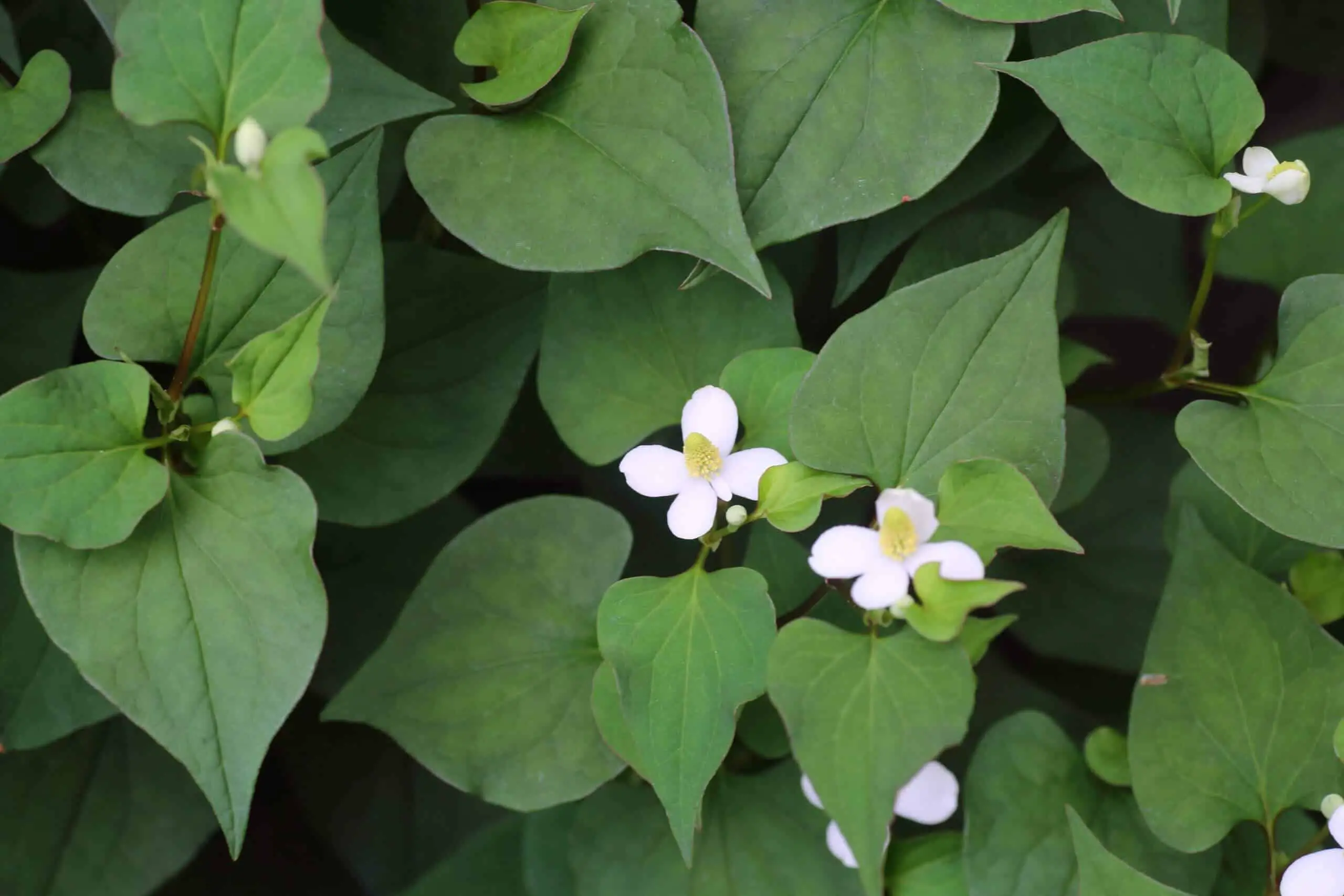
How Houttuynia Cordata looks similar to Japanese Knotweed
Houttuynia cordata and Japanese Knotweed have similar leaves and grow in similar ways too. Both plants are characterized by their heart-shaped leaves and their ability to grow in a wide variety of habitats.
How you can tell the difference between Houttuynia Cordata and Knotweed
Houttuynia Cordata has small, heart-shaped leaves and produces white or pink flowers. Japanese Knotweed, on the other hand, is a large, woody plant that can grow up to 3 metres tall. It has oval-shaped leaves and produces small white flowers.
Houttuynia Cordata has shallow, creeping roots that spread outwards from the plant. Japanese Knotweed, on the other hand, has a deep taproot that can reach up to 2 metres in depth.
Houttuynia Cordata has thin, fragile stems that are easy to break. Japanese Knotweed, on the other hand, has thick, woody stems that are very difficult to break.
Finally, Houttuynia Cordata can be distinguished from Japanese Knotweed by its flowers. Houttuynia Cordata produces small white or pink flowers, while Japanese Knotweed produces small white flowers.
How to get rid of Houttuynia Cordata
- Hand-pulling: This is the most effective method of removal, but it can be time-consuming. Be sure to pull up the entire plant, including the roots.
- Mowing: This will not kill the plant, but it will prevent it from spreading. Be sure to mow before the plant flowers and sets seeds.
- Herbicides: There are several herbicides that will kill Houttuynia Cordata, but they must be applied carefully to avoid harming other plants. Be sure to follow the directions on the label and apply the herbicide to the leaves, not the roots.
Russian Vine (Fallopia baldschuanica)
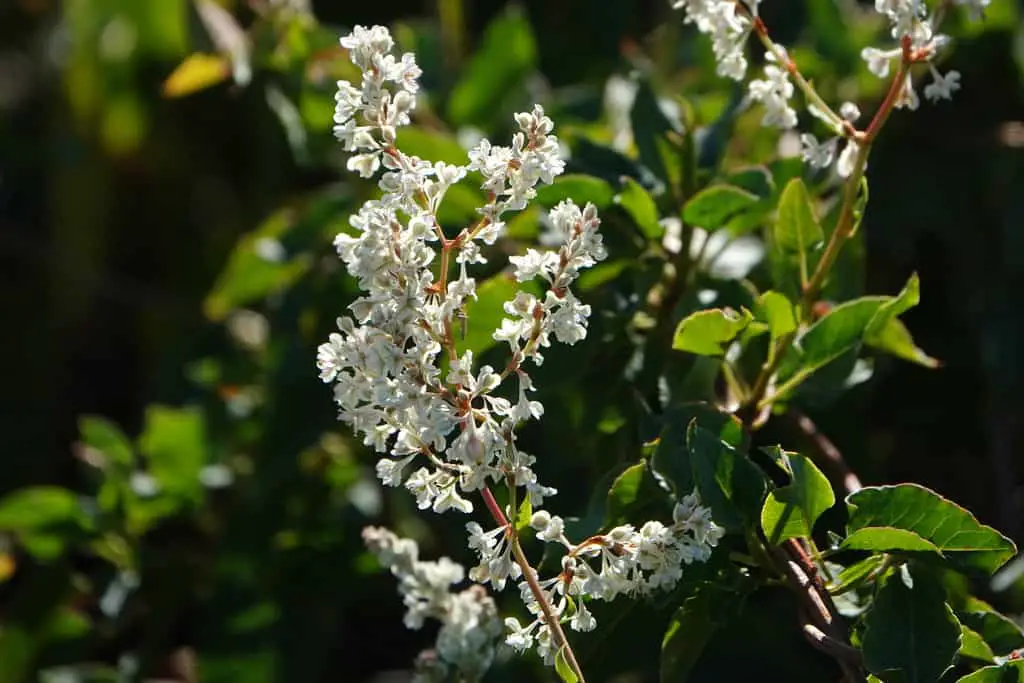
How Russian Vine looks similar to Japanese Knotweed
Also a fast-growing plant, the Russian Vine sprouts leaves, and flowers which can appear very similar to Japanese Knotweed.
How you can tell the difference between Russian Vine and Japanese Knotweed
Unlike Japanese Knotweed, Russian Vine is a climbing plant and relies on the erect stems of other plants or solid structures to twist around and grow up.
How to get rid of Russian Vine
Locate the trunk, saw through it, and paint poison on the stump which will then be absorbed. You can also use herbicide by stuffing as much of the plant as you can into a plastic bag and spraying liberally with glyphosate, then tie up the neck of the bag securely and leave until you see the desired results.
Rinse and repeat until you have killed it completely. This method will also protect any nearby plants from the use of the herbicide.
What does Japanese Knotweed look like?
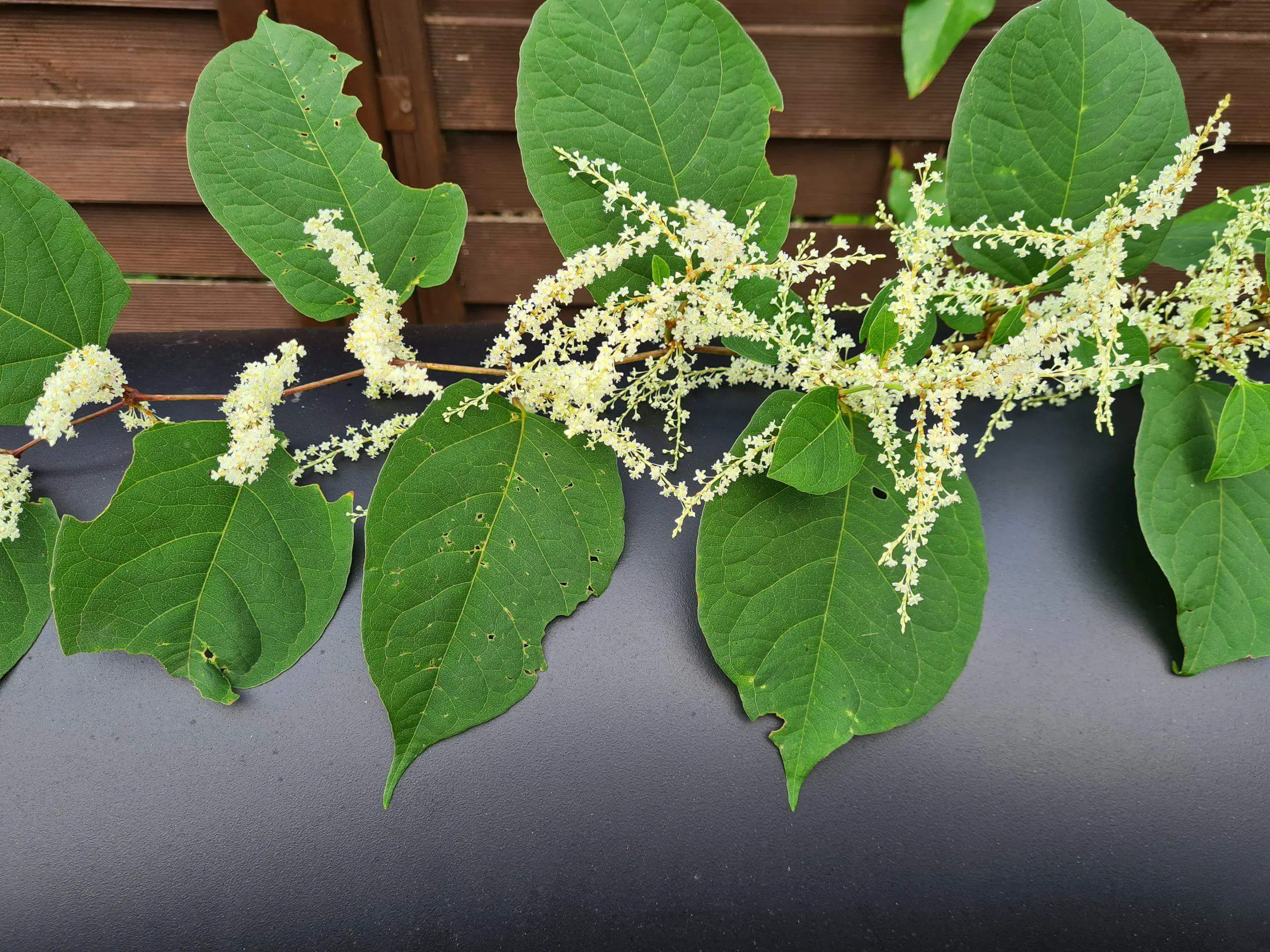
If you want a clearer idea of what Japanese Knotweed looks like with all its features, please click the button below for our comprehensive guide to Japanese Knotweed Identification.
What to do if you are still unsure?
If you are unsure if you have Japanese Knotweed or something else growing on your land then you can contact a local Japanese knotweed specialist who will help you identify what you have on your land.
Most specialists these days offer a free photo identification service to clarify what you have and whether it needs investigating more.

